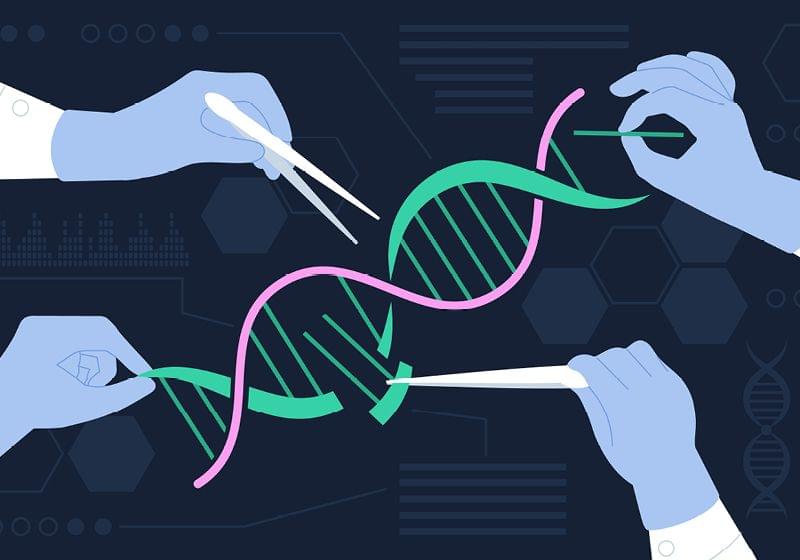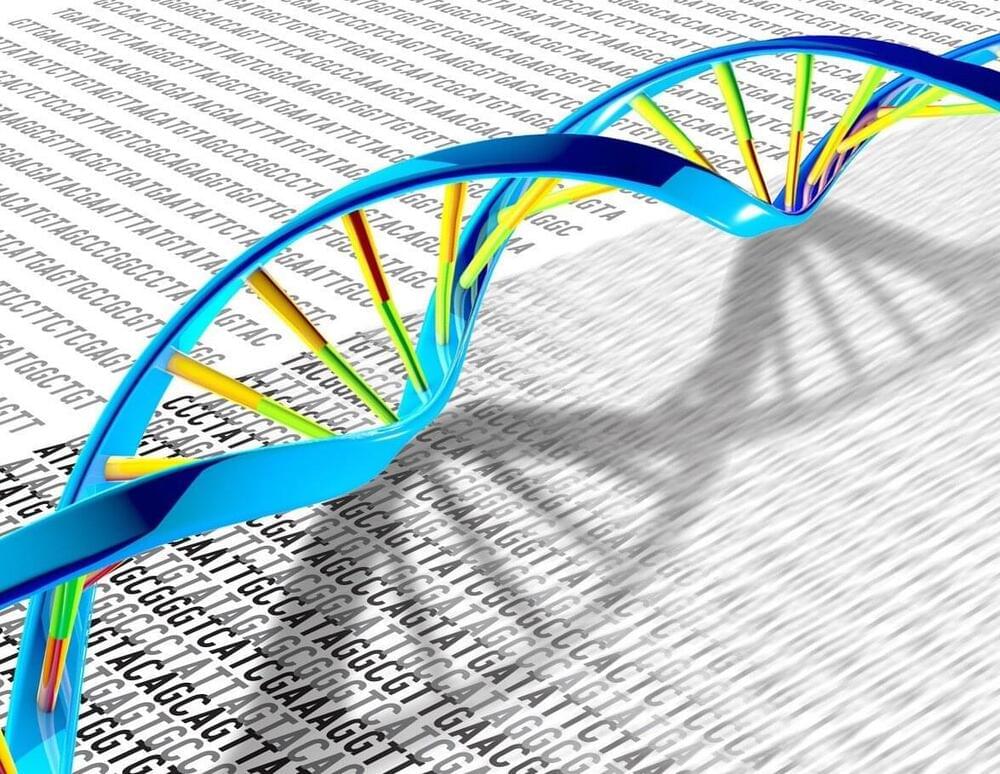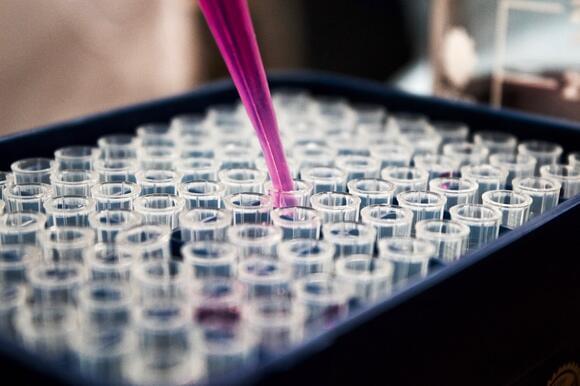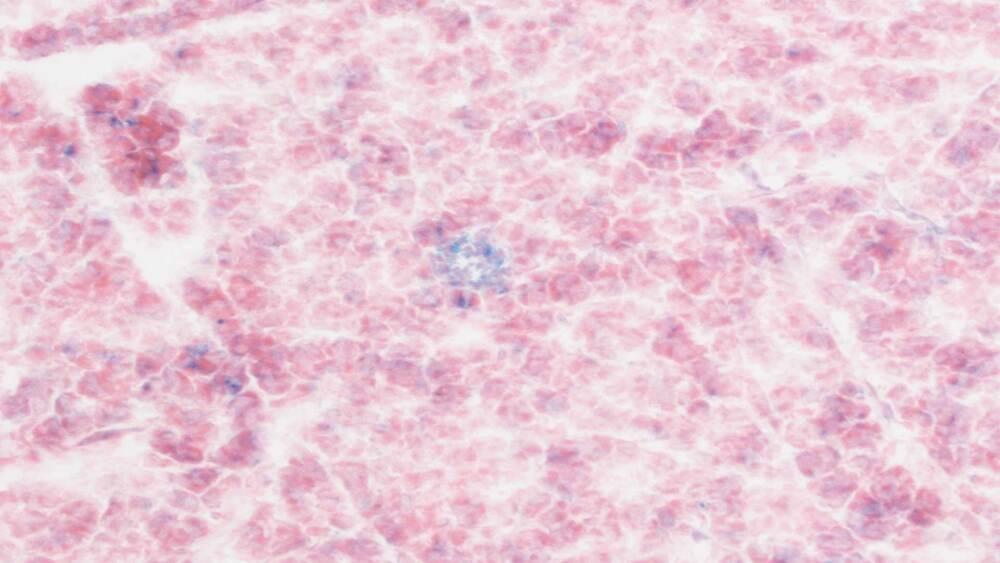Join us on Patreon! https://www.patreon.com/MichaelLustgartenPhDDiscount Links: Epigenetic, Telomere Testing: https://trudiagnostic.com/?irclickid=U-s3Ii2r7x…
Category: genetics – Page 168

Healthy eating and activity reverse aging marker in kids with obesity, study finds
A genetic marker linked to premature aging was reversed in children with obesity during a six-month diet and exercise program, according to a recent study led by the Stanford School of Medicine.
Children’s telomeres—protective molecular “caps” on the chromosomes—were longer during the weight management program, then were shorter again in the year after the program ended, the study found. The research was published last month in Pediatric Obesity.
Like the solid segment at the end of a shoelace, telomeres protect the ends of chromosomes from fraying. In all people, telomeres gradually shorten with aging. Various conditions, including obesity, cause premature shortening of the telomeres.

Optimizing Gene Editing with PARP1 CRISPR Plasmids
Gene editing is revolutionizing the understanding of health and disease, providing researchers with vast opportunities to advance the development of novel treatment approaches. Traditionally, researchers used various methods to introduce double strand breaks (DSBs) into the genome, including transactivator-like effectors, meganucleases, and zinc finger nucleases. While useful, these techniques are limited in that they are time and labor intensive, less efficient, and can have unintended effects. In contrast, the clustered regularly interspaced short palindromic repeat (CRISPR)-associated protein-9 (Cas9) system (CRISPR/Cas9) is among the most sensitive and efficient methods for creating DNA DSBs, making it the leading gene editing technology.
CRISPR/Cas9 is a naturally occurring immune protective process that bacteria use to destroy foreign genetic material.1 Researchers repurposed the CRISPR/Cas9 system for genetic engineering applications in mammalian cells, exploiting the molecular processes that introduce DSBs in specific sections of DNA, which are then repaired to turn certain genes on or off, or to correct genomic errors with extraordinary precision.2,3 This technology’s applications are far reaching, from cell culture and animal models to translational research that focuses on correcting genetic mutations in diseases such as cancer, hemophilia, and sickle cell disease.4
Researchers exploit plasmids, the small, closed circular DNA strands native to bacteria, as delivery vehicles in CRISPR/Cas9 gene editing protocols. Plasmids shuttle the CRISPR/Cas9 gene editing components to target cells and can be manipulated to control gene editing activity, including targeting multiple genes at a time. Plasmids can also deliver gene repair instructions and machinery. For example, poly (ADP-ribose) polymerase 1 (PARP1) is an enzyme that drives DNA repair and transcription.5 It is a critical aspect of CRISPR/Cas9 gene editing technology in part because it helps repair the DSBs created by the CRISPR/Cas9 system. PARP1 CRISPR plasmids can edit, knockout, or upregulate PARP1 gene expression depending on the specific instructions encoded in the plasmid.


New tool improves the search for genes that cause diseases
A new statistical tool developed by researchers at the University of Chicago improves the ability to find genetic variants that cause disease. The tool, described in a new paper published January 26, 2024, in Nature Genetics, combines data from genome-wide association studies (GWAS) and predictions of genetic expression to limit the number of false positives and more accurately identify causal genes and variants for a disease.
GWAS is a commonly used approach to identify genes associated with a range of human traits, including most common diseases. Researchers compare genome sequences of a large group of people with a specific disease, for example, with another set of sequences from healthy individuals. The differences identified in the disease group could point to genetic variants that increase risk for that disease and warrant further study.
Most human diseases are not caused by a single genetic variation, however. Instead, they are the result of a complex interaction of multiple genes, environmental factors, and host of other variables. As a result, GWAS often identifies many variants across many regions in the genome that are associated with a disease.

Chinese Lab Created New Coronavirus, 100% Mortality Rate in Human Transgenetic Mice
According to a paper submitted for peer review on January 4th, 2024, Lethal Infection of Human ACE2-Transgenic Mice Caused by SARS-CoV-2-related Pangolin Coronavirus GX_P2V(short_3UTR), a new lab-created coronavirus has the potential to kill 100% of those infected with the virus within 8 days of infection.
The mice were genetically modified to express the human ACE2 receptor. This is the receptor responsible for allowing coronavirus to gain cellular entry. The lab infected mice with a coronavirus engineered from a strain found in pangolins. Pangolins are medium-sized animals growing to 12 — 30 inches in length and have the appearance of a scale-plated anteater.
Researchers monitored the mice for signs of infection by recording body weight, taking tissue samples, and monitoring for other symptoms. By the third day post-infection, tissue samples from the infected mice had a significant amount of viral RNA in the brain, eye, lung, and nasal tissue.

The fountain of youth is … a T cell?
“If we give it to aged mice, they rejuvenate. If we give it to young mice, they age slower. No other therapy right now can do this.”
The fountain of youth has eluded explorers for ages. It turns out the magic anti-aging elixir might have been inside us all along.
Cold Spring Harbor Laboratory (CSHL) Assistant Professor Corina Amor Vegas and colleagues have discovered that T cells can be reprogrammed to fight aging, so to speak. Given the right set of genetic modifications, these white blood cells can attack another group of cells known as senescent cells. These cells are thought to be responsible for many of the diseases we grapple with later in life.
Senescent cells are those that stop replicating. As we age, they build up in our bodies, resulting in harmful inflammation. While several drugs currently exist that can eliminate these cells, many must be taken repeatedly over time.

Breakthrough: Deaf Boy Can Hear After First Gene Treatment in US
His father’s voice, the sounds of passing cars and scissors clipping his hair: An 11-year-old boy is hearing for the first time in his life after receiving a breakthrough gene therapy.
The Children’s Hospital of Philadelphia (CHOP) which carried out the treatment – a first in the United States – said in a statement Tuesday the milestone represents hope for patients around the world with hearing loss caused by genetic mutations.
Aissam Dam was born “profoundly deaf” because of a highly rare abnormality in a single gene.

T Cells May Be The Living Anti-Aging Elixir
The fountain of youth has eluded explorers for ages.
Summary: Researchers found that T cells can be genetically reprogrammed to target and eliminate senescent cells, which contribute to aging-related diseases. By using CAR (chimeric antigen receptor) T cells in mice, they achieved significant health improvements including lower body weight, enhanced metabolism, and increased physical activity.
This groundbreaking approach, offering long-term effects from a single treatment, could revolutionize treatments for age-related conditions like obesity and diabetes, transcending the potential of CAR T cells beyond their current use in cancer therapy.
